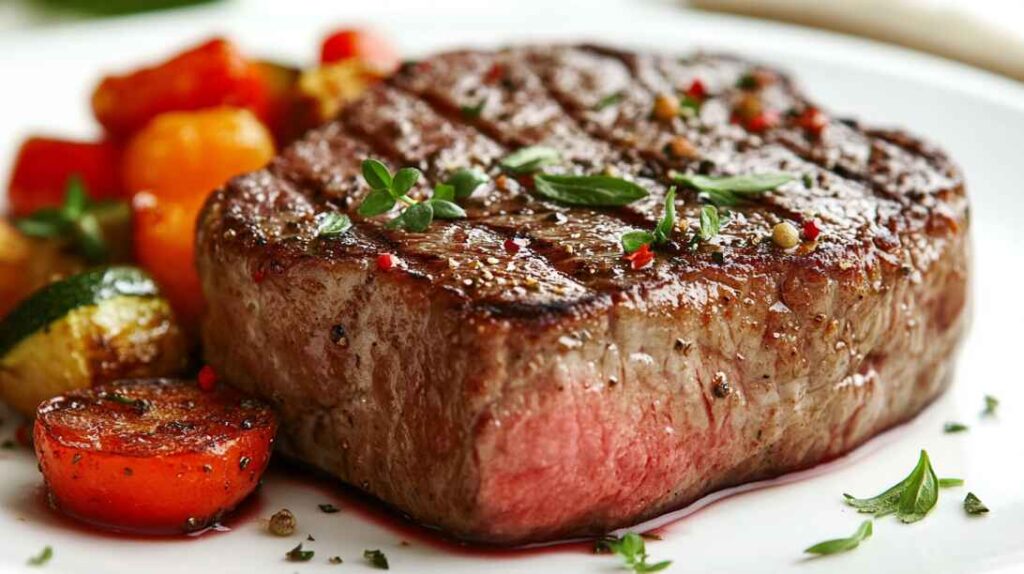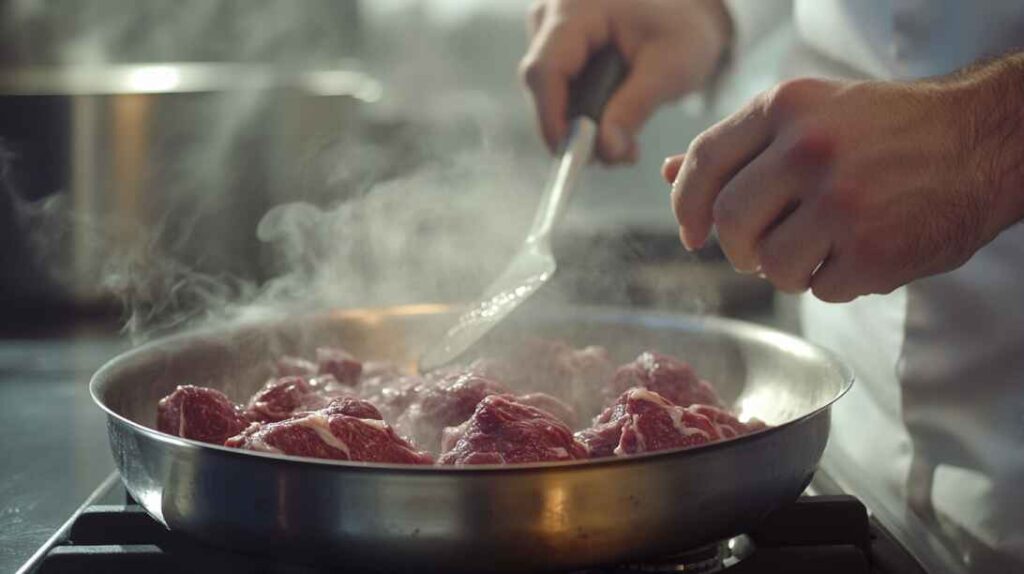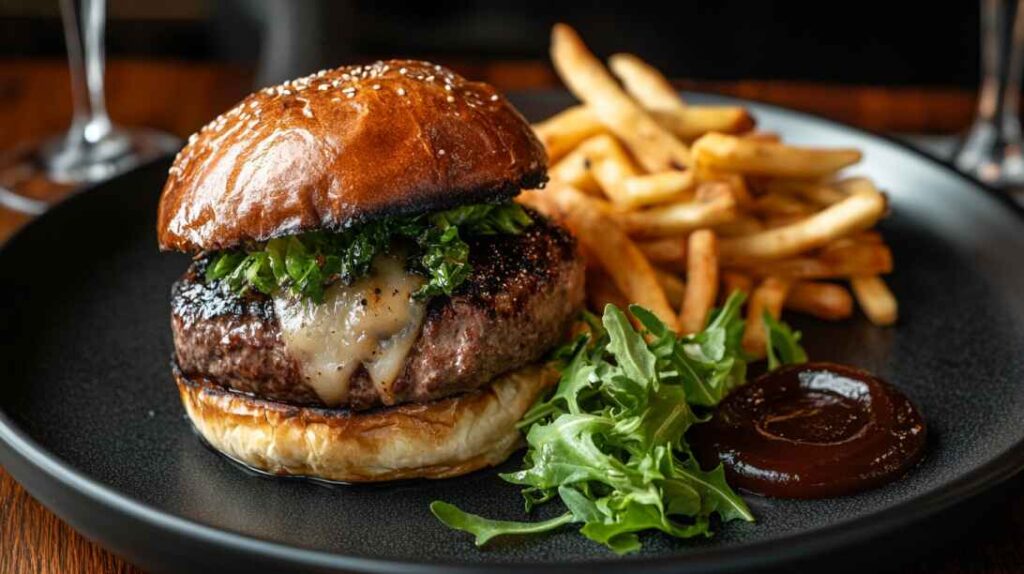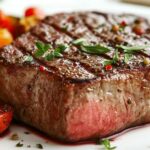
When it comes to gourmet meats, rosé beef stands out as a delicacy that has captured the attention of chefs and food enthusiasts alike. But what exactly is rosé beef? Is it a type of beef, or is it closer to veal? And why is it so highly prized in the culinary world? In this article, we’ll dive deep into the origins, production, and culinary uses of rosé beef, while also exploring its nutritional benefits and ethical considerations. Whether you’re a seasoned foodie or just curious about this unique meat, this guide will answer all your questions and more.
Table of Contents
Introduction to Rosé Beef
What is Rosé Beef?
Rosé beef is a premium meat known for its delicate texture, pale pink color, and mild flavor. Often referred to as pink veal or young beef, it comes from calves that are slightly older than those used for traditional veal but younger than cattle raised for regular beef. The name rosé beef is derived from its distinctive rosy hue, which sets it apart from darker cuts of beef.
This meat is particularly popular in French cuisine, where it’s celebrated for its tenderness and versatility. Unlike veal, which comes from very young calves, rosé beef strikes a balance between the softness of veal and the richer flavor of mature beef.
The Popularity of Rosé Beef
So, why has rosé beef become a favorite among chefs and food lovers? For starters, its mild flavor makes it an excellent canvas for a variety of seasonings and cooking techniques. Whether it’s grilled, roasted, or pan-seared, rosé beef retains its tenderness and juiciness, making it a star ingredient in gourmet dishes.
Moreover, its ethical production methods have garnered attention. Unlike traditional veal, which has faced criticism for its farming practices, rosé beef is often produced under stricter welfare standards. This focus on sustainability and animal welfare has made it a more appealing choice for conscientious consumers.
In the next section, we’ll explore the origins and production process of rosé beef, shedding light on how this unique meat makes its way from farm to table.
The Origins and Production of Rosé Beef

Where Does Rosé Beef Come From?
Rosé beef typically comes from specific breeds of cattle, such as the French Blonde d’Aquitaine or Limousin. These breeds are known for their lean meat and tender texture, making them ideal for producing rosé beef. Geographically, France is the most famous producer of this delicacy, though other regions, like Italy and Spain, have also started embracing its production.
The calves used for rosé beef are usually raised in open pastures, where they can graze freely. This farming method not only ensures better animal welfare but also contributes to the meat’s unique flavor and texture.
How is Rosé Beef Produced?
The production of rosé beef involves a careful balance of age, diet, and farming practices. Unlike veal, which comes from calves as young as 5 months old, rosé beef comes from slightly older calves, typically around 8 to 12 months. This extra time allows the meat to develop a richer flavor while maintaining its tenderness.
The diet of these calves plays a crucial role in the quality of the meat. While traditional veal calves are often fed a milk-based diet, rosé beef calves are transitioned to a diet of grass, hay, and grains. This not only enhances the meat’s flavor but also gives it that signature pale pink color.
The Difference Between Rosé Beef and Regular Beef
When compared to regular beef, rosé beef stands out for its lighter color and more delicate texture. Regular beef comes from mature cattle, which results in a darker, richer meat with a stronger flavor. In contrast, rosé beef offers a milder taste and a buttery texture that melts in your mouth.
Nutritionally, rosé beef is leaner than regular beef, making it a healthier option for those watching their fat intake. However, it still packs a punch when it comes to protein and essential nutrients like iron and zinc.
Culinary Uses of Rosé Beef

Why Chefs Love Rosé Beef
Chefs around the world adore rosé beef for its versatility and tenderness. Its mild flavor makes it a perfect base for a variety of seasonings and sauces, while its tender texture ensures that it’s always a hit on the plate. Whether it’s a high-end restaurant or a home kitchen, rosé beef brings a touch of luxury to any dish.
One of the reasons rosé beef is so popular is its ability to adapt to different cooking methods. From grilling and roasting to pan-searing and braising, this meat retains its juiciness and flavor no matter how it’s prepared.
Popular Rosé Beef Dishes
In French cuisine, rosé beef is often used in classic dishes like escalope de veau (veal escalope) or blanquette de veau (veal stew). These dishes highlight the meat’s tenderness and pair it with rich, creamy sauces that complement its mild flavor.
Modern chefs have also started experimenting with rosé beef in global cuisines. For example, it’s becoming a popular choice for gourmet burgers, where its lean texture and subtle flavor shine. Additionally, it’s often used in Asian-inspired stir-fries or Mediterranean-style grilled dishes.
Pairing Rosé Beef with Wines and Sides

When it comes to pairing rosé beef with wine, light reds like Pinot Noir or a crisp white like Chardonnay work beautifully. These wines enhance the meat’s delicate flavor without overpowering it.
For side dishes, think simple yet elegant. Roasted vegetables, creamy mashed potatoes, or a fresh green salad are all excellent choices. If you’re feeling adventurous, try pairing rosé beef with a tangy chimichurri sauce or a rich mushroom risotto for a truly gourmet experience.
Rosé Beef vs. Veal: Understanding the Differences
What is Veal?
Veal is a type of meat that comes from young calves, typically under 5 months old. Known for its pale color and tender texture, veal has been a staple in European cuisine for centuries. However, its production has often been controversial due to concerns about animal welfare, particularly when calves are raised in confined spaces.
Key Differences Between Rosé Beef and Veal
While both rosé beef and veal come from young cattle, there are some key differences between the two. First, rosé beef comes from slightly older calves, usually between 8 to 12 months old. This extra time allows the meat to develop a richer flavor while still maintaining its tenderness.
Another difference lies in the diet of the calves. Veal calves are often fed a milk-based diet, which keeps their meat pale and soft. On the other hand, rosé beef calves are transitioned to a diet of grass, hay, and grains, giving the meat a slightly pinker hue and a more nuanced flavor.
Texture-wise, rosé beef is firmer than veal but still incredibly tender. This makes it a versatile option for a variety of cooking methods, from grilling to braising.
Is Rosé Beef a Type of Veal?
This is a common question, and the answer is no. While both meats come from young cattle, rosé beef is not veal. It’s a distinct product that bridges the gap between veal and regular beef, offering a unique combination of tenderness and flavor.
For those who are concerned about ethical farming practices, rosé beef is often seen as a more sustainable and humane option compared to traditional veal. This is because the calves are typically raised in open pastures with access to natural grazing.
The Nutritional Profile of Rosé Beef
Health Benefits of Rosé Beef
Rosé beef is not just delicious it’s also packed with nutrients. For starters, it’s an excellent source of high-quality protein, which is essential for muscle repair and growth. Additionally, it’s rich in iron, zinc, and B vitamins, all of which play a crucial role in maintaining overall health.
What’s more, rosé beef is leaner than regular beef, making it a healthier option for those watching their fat intake. Its lower fat content doesn’t compromise on flavor, though, as the meat remains juicy and tender when cooked properly.
Comparing Rosé Beef to Other Meats
When compared to regular beef, rosé beef is lighter in both color and texture. It’s also leaner, with less marbling, which makes it a better choice for health-conscious consumers.
Compared to veal, rosé beef offers a more balanced nutritional profile. While veal is also lean and tender, it often lacks the depth of flavor that rosé beef provides. Plus, the ethical farming practices associated with rosé beef make it a more appealing option for many.
In conclusion, rosé beef is a nutritious and delicious choice for anyone looking to enjoy a high-quality meat that’s both tender and flavorful. Whether you’re cooking a gourmet meal or simply looking for a healthier alternative to regular beef, rosé beef is worth trying.
Ethical and Sustainable Practices in Rosé Beef Production
Ethical Farming Practices
When it comes to rosé beef, ethical farming practices are a top priority. Unlike traditional veal production, which has faced criticism for confining calves to small spaces, rosé beef calves are often raised in open pastures. This allows them to graze freely, leading to better animal welfare and higher-quality meat.
Many producers of rosé beef also adhere to strict guidelines to ensure sustainability. For instance, they focus on reducing their environmental impact by using eco-friendly farming methods and minimizing waste. This commitment to ethical practices not only benefits the animals but also appeals to consumers who care about where their food comes from.
Consumer Awareness
As a consumer, it’s important to know how to identify ethically sourced rosé beef. Look for labels like “pasture-raised” or “certified humane,” which indicate that the meat comes from farms with high welfare standards. Additionally, some producers provide transparency by sharing details about their farming practices on their websites or packaging.
By choosing rosé beef from ethical sources, you’re not only enjoying a delicious meal but also supporting sustainable agriculture. It’s a win-win for both your taste buds and the planet.
FAQs About Rosé Beef
What Part of the Cow is Rosé Meat?
Rosé beef typically comes from the same cuts as regular beef, such as the loin, rib, or shoulder. However, because it’s from younger cattle, the meat is more tender and has a lighter color.
How is Veal Different from Beef?
Veal comes from very young calves, usually under 5 months old, while beef comes from mature cattle. Rosé beef, on the other hand, comes from calves that are slightly older than veal calves but younger than cattle raised for beef. This gives it a unique texture and flavor that’s somewhere between veal and beef.
What is Another Name for Rosé Meat?
Rosé beef is sometimes called pink veal or young beef. These names highlight its pale pink color and the age of the cattle it comes from.
Is Rosé Meat Tender?
Absolutely! One of the main reasons rosé beef is so popular is its tenderness. Thanks to the age of the calves and their diet, the meat is soft, juicy, and perfect for a variety of cooking methods.
Explore More Delicious Beef Recipes and Culinary Insights 🥩
If you enjoyed learning about rosé beef, you’ll love diving into more beef-related topics and recipes! Discover the versatility of beef with our guide on What is Beef Round Tip Steak Used For? to explore another lean and flavorful cut. For a deeper understanding of sustainable eating, check out Are Soup Bones Good to Eat? and learn how to make the most of every part of the animal. And if you’re curious about unique flavor combinations, don’t miss our article on What Does a Crookie Taste Like? a delightful fusion of croissant and cookie that’s taking the culinary world by storm. With these resources, you’ll expand your culinary knowledge and skills in no time! ✨
Conclusion
So, what is rosé beef? It’s more than just a gourmet meat it’s a culinary experience that combines tenderness, flavor, and ethical farming practices. From its origins in open pastures to its starring role in fine dining, rosé beef offers a unique balance between the delicate texture of veal and the richer taste of mature beef.
Whether you’re a chef looking to elevate your dishes or a home cook eager to try something new, rosé beef is a versatile and delicious choice. Its mild flavor pairs beautifully with a variety of seasonings, wines, and sides, making it perfect for everything from elegant dinners to casual meals.
By choosing rosé beef, you’re not only treating yourself to a premium ingredient but also supporting sustainable and ethical farming practices. So why not give it a try? Your taste buds and the planet will thank you.
Rosé Beef Escalope with Herb Butter
Equipment
- Pan
- Knife
- Cutting board
Ingredients
For the Rosé Beef Escalopes
- 4 rosé beef escalopes about 6 oz each
- 1 teaspoon salt
- 1/2 teaspoon black pepper freshly ground
- 2 tablespoons olive oil for cooking
For the Herb Butter
- 1/2 cup unsalted butter softened
- 2 tablespoons fresh parsley finely chopped
- 1 tablespoon fresh thyme leaves
- 1 teaspoon garlic minced
- 1/4 teaspoon salt
- 1/8 teaspoon black pepper freshly ground
Instructions
- To prepare the herb butter, combine softened butter, parsley, thyme, garlic, salt, and pepper in a small bowl. Mix well until all ingredients are evenly incorporated. Shape the butter into a log using plastic wrap, then refrigerate for at least 5 minutes to firm up.
- Season both sides of the rosé beef escalopes with salt and pepper.
- Heat olive oil in a large pan over medium-high heat. Once hot, add the escalopes and cook for about 3-4 minutes per side or until golden brown and cooked through. Avoid overcooking to maintain tenderness.
- Remove the escalopes from the pan and let them rest for 2 minutes. Top each piece with a slice of chilled herb butter, allowing it to melt slightly before serving.
- Serve immediately alongside roasted vegetables or creamy mashed potatoes for a complete meal.

